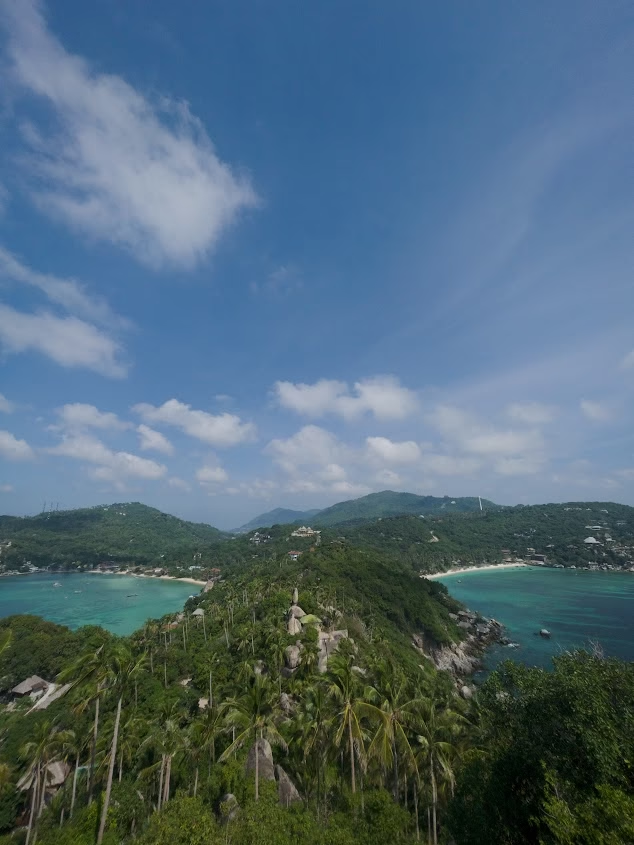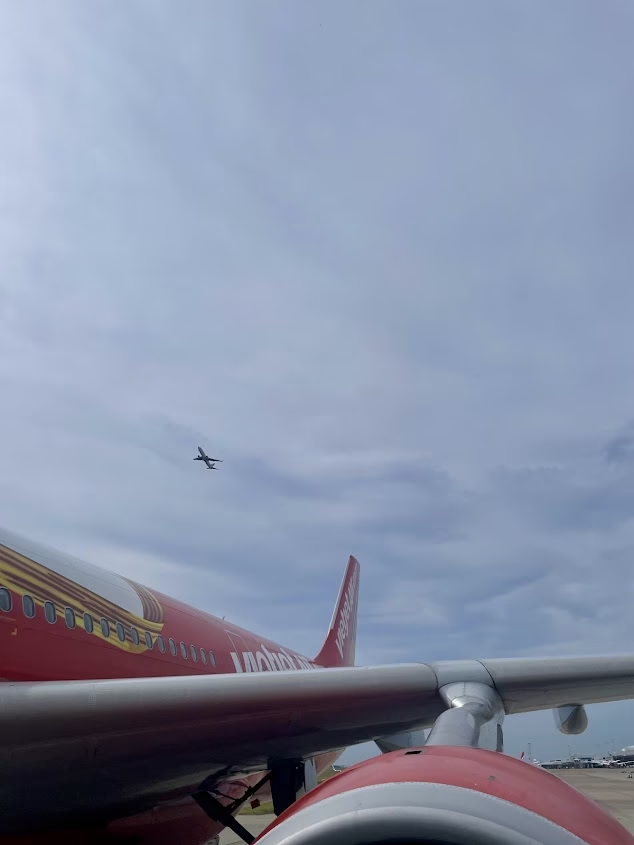
No matter how experienced you are at traveling, travel disasters can and do still happen. So often, these are out of your control and have to do with the many moving parts that have to simultaneously work out for your trip to go smoothly, from transportation and weather to accommodation and people. If just one thing goes wrong, BOOM! The domino effect goes into effect, and it can quickly spiral into a disaster.
As a travel advisor and blogger, I’d like to think that I’m a good traveler. Not only do I have experience traveling in 33 countries across 4 continents, but I’ve done many of them solo. I also help people plan their dream trips as my profession. However, I’ve still had my fair share of travel disasters that were out of my control and took a physical, mental, and financial toll. Regardless of how good you are at planning travel, you can’t control what you can’t control.
I’m counting down my top 5 travel disasters to show you that even travel professionals deal with nightmare situations. If you can learn from my mistakes and make these situations more avoidable, that’s my goal.
5. Toilet-less overnight buses in Vietnam

This travel disaster was not a one-time thing, but happened THREE times. I spent one month traveling north to south in Vietnam, and if you know anything about the geography of Vietnam, that’s a long distance. I had to take three overnight buses to cover that much ground without using all of my budget on flights.
I didn’t know until I boarded my first overnight bus that almost no buses in Vietnam have toilets on board, which could be manageable if they stopped for occasional breaks. However, overnight buses in Vietnam neither have toilets nor stop regularly for toilet breaks. If you ask the staff to stop for a toilet break, they will either ignore you or rudely tell you no. That’s right – they will straight up refuse to stop for the toilet.
The bus drivers and staff in Vietnam see their job as getting passengers from one place to another as quickly as possible, and therefore, toilet breaks are seen as an annoying hold-up. As someone who needs frequent access to a toilet (if I know I don’t have one accessible, my anxiety will make me need to use one even more), I had to beg and plead with the bus staff to stop. I heard other tourists doing it as well, all being rudely dismissed. They only let us off when the bus needed to refuel, hours after the requests began. At least 10 tourists ran full speed off the bus directly to the toilets.
Lessons learned:
If you’re taking an overnight bus in Vietnam, don’t drink a lot in the day leading up to your journey. If you need to use the toilet while on the bus, don’t wait until you’re about to explode before asking the staff – it’s probably going to take repeated begging for them to let you off. Finally, if you’re really worried about this, reach out to a local travel agency because they will know which buses (if any) DO have toilets. It’s rare, but it’s sometimes possible.
4. Food poisoning in Bali


Infamous Bali belly comes for so many tourists traveling in Indonesia, and I was one of the many unfortunate ones to experience this common travel disaster. “Bali belly” is a nickname for traveler’s diarrhea, which tourists experience more frequently in Bali than in most other destinations. It’s often caused by consuming contaminated food or water, and even if you follow all the recommended rules for avoiding it, it can still get you.
I didn’t eat meat, raw fruits or vegetables, or consume unfiltered water or ice when I was in Bali. I also didn’t brush my teeth with tap water, and only ate at restaurants with high reviews from other tourists. I did everything the Internet recommended to stay away from Bali belly, so I have no idea how I still ended up with it. You’ll hear many travelers say the same thing – it seems like exposure to the unfamiliar bacteria in Bali upsets many people’s stomachs. It might not be “bad” bacteria, but it’s bacteria that our bodies aren’t used to.
My experience with Bali belly was better than most cases I heard about, because mine only lasted about three days and I was able to leave my room after the first day. However, it was especially disastrous because I was staying in the worst hostel for needing frequent and fast access to the toilets. My dorm room was across a courtyard and up the stairs from the nearest toilet. Let’s just say that I was regularly bolting out of bed and running down the stairs and across the courtyard, praying I’d make it in time.
Lessons learned:
There’s no way to guarantee you won’t get Bali belly, because even the most careful travelers can get it. However, you can certainly reduce your risk or reduce the severity by following the typical rules: check restaurant reviews, no raw fruits and vegetables, no unfiltered water and ice, and no brushing teeth with tap water. If you’re staying in a hostel or shared toilet situation in Bali, make sure you’re close to the toilet upon check-in, just in case anything happens.
Avoid travel disasters with a trusted expert
Travel disasters happen, but they don’t have to ruin your trip. I help travelers design seamless, stress-free adventures, using my years of experience exploring Asia and beyond to avoid common pitfalls and handle the unexpected. Let me help you travel with confidence, knowing you have an expert in your corner.
Let’s create your custom travel plan today.
3. Motorbike accident in Koh Tao


My second and third worst travel disasters both happened in Koh Tao, Thailand. I loved Koh Tao, but maybe Koh Tao didn’t love me?
One of my closest friends met me in Koh Tao, and we decided to rent a motorbike to explore the island. I had driven motorbikes all over Southeast Asia without problem, as long as they were considered “beginner-friendly”, but no one warned me that Koh Tao is NOT an easy place to drive. It seemed like every single tourist on Koh Tao was driving a motorbike, so how hard could it be?
Well, our first few days of motorbiking around the island went smoothly. On our last day, we decided to drive to a more remote, off-the-beaten-path beach. On our way there, we encountered some treacherous roads, unlike the ones we’d been on before. As we were driving up a very steep and narrow road, the motorbike wasn’t powerful enough to get us up, so it started to overcompensate. I lost control of the bike, and because we were headed towards a brick wall, I made the split-second decision to intentionally fall on our side.
We got super lucky, because my friend and I walked away with some cuts and bruises but no major injuries. The motorbike’s side mirror was shattered, but I paid a whopping $10 USD to get it fixed. Although I felt awful that my friend was beaten up, we were just happy that it wasn’t serious and we walked away mostly unscathed.
Lessons learned:
Do some serious research on the roads before you drive a motorbike anywhere in Southeast Asia. Don’t just look online, but ask around once you get there. I never heard in advance that Koh Tao had dangerous roads, but once we went through this, we heard many stories from other people with the same experience. Additionally, make sure that your motorbike has enough CCs. Our engine wasn’t big enough for two people, which is why it spiraled out of control when the roads got steep.
2. Getting stuck on Koh Tao

Another Koh Tao travel disaster! On my last day on the island, I was supposed to catch the first speedboat back to mainland Thailand, where I would catch a flight the next day to Laos. Spoiler alert: I didn’t make that flight (my top two travel disasters have to do with missing flights…).
I went to the front desk of my hotel on my last day to check out and head to the pier to board the boat. When I got there, the staff informed me that no boats were running that day because of strong winds. It was a sunny, beautiful day – how could every single boat be cancelled? My flight was early the next morning, so I was screwed if I couldn’t get off the island that day.
Sure enough, the boat staff confirmed that there wouldn’t be a single boat leaving for the mainland that day. The winds were so strong that it wasn’t safe. While I’d never want to board a boat in unsafe conditions, this was less than ideal. I was flying a budget airline to Laos, so I couldn’t get a refund or change my ticket.
Luckily, boats started running again the next day, so I got on the very first speedboat to the mainland and bought a flight for the next day to Laos. I made it to Laos almost two days late and with a big dent in my budget, but I made it.
Lessons learned:
When relying on a boat to get you to the airport, plan at least two days ahead in case of cancellations and delays. Even if the weather forecast looks bright and sunny, check wind speeds as well.
1. Being denied entry into Vietnam


Travel disaster #1 is still a sore subject for me. This is the most stressful, consequential, and costly travel mistake I’ve ever made – by A LOT. And I’m still salty about it, because it wasn’t completely my fault.
Let me set the scene: I’ve just finished a month of traveling in Australia, and I’m at the Sydney Airport about to board my flight to Hanoi, Vietnam, where I’ll spend my next month. I’ve successfully checked in, gone through security, and am waiting at the gate. 30 minutes before my flight is scheduled to board, I’m called up to the gate counter. I instantly had a gut feeling that something was wrong. Spoiler alert: my gut is (almost) always right.
They ask to see my e-visa, and immediately, I know exactly what’s wrong. When I applied for my e-visa months ago, the Vietnamese embassy denied it, saying my last name didn’t match my passport. Well, my last name in all legal documents is “Kielb”, and that’s exactly what I’d put. I reached out for guidance, and the embassy responded saying my last name had to match the ICAO line (the line of code-looking details on the bottom of your passport information page). Sure enough, my last name was written there as “USAKielb” (my country & last name).
So, as instructed by the embassy, I resubmitted my e-visa application using “USAKielb” and it was approved the same day. I felt weird about this, but I had written documentation that they’d told me to do so.
Well, of course, that was wrong – someone at the embassy had no idea what they were doing. Even though I explained the situation to the gate staff and showed them the paper trail, they couldn’t let me board the flight because I would be denied entry into Vietnam regardless. They felt terrible for me and were very nice, but there was nothing they could do. (Side note: as an American, I couldn’t do a visa on arrival. Arranging it in advance is the only way.)
The next flight to Hanoi was three days later, so the next day I made a trip to the Vietnamese Embassy in Sydney. I applied for a (very costly) emergency visa, and an hour later, I had the proper documentation to get into Vietnam. Between the same-day visa, flight change, and last-minute accommodation costs in Sydney, the most costly of my travel disasters cost me over $600 USD, never mind the emotional and mental toll.
Lessons learned:
If your visa is denied for reasons that seem wrong to you, stand up for yourself and don’t blindly follow what the embassy tells you. They’re human, too, and they make mistakes. Vietnam visas are notorious for having problems, so apply at least a few months in advance.
How can I avoid travel disasters?
I wish I had a better answer than this, but… you can’t, not completely. Travel comes with surprises and unknowns, and not all of them are the good kind. But as a travel advisor, my job is to seriously reduce your chances of ending up in a mess. I help you plan smarter, avoid common pitfalls, and prep for the unexpected so you can focus on the adventure without worrying that something will go wrong.
How can I make travel disasters less disastrous when they do happen?
That’s where working with a travel expert can make all the difference. Having a travel advisor means you’re not handling it alone when travel disasters inevitably happen sometimes. I’ll help communicate with important players, deal with bookings, and be your behind-the-scenes support, so the stress is off your shoulders and you can get back to making memories, minus the meltdowns.
Keep reading:
- Southeast Asia backpacking route: The best 3-6 month itinerary
- Vietnam Itinerary: 3-4 weeks for backpackers and solo travelers
- Ha Giang Loop: Backpacker’s guide to Vietnam’s epic road trip
- Best things to do in Hanoi: Ultimate guide for first-timers
- Thailand Itinerary: The perfect 2+ weeks for first-timers
- The best islands in Thailand: Top 3 tropical escapes of 2025
- Solo female travel in Thailand: Safety, tips, & what to expect
- Bali Itinerary: 2 weeks of adventure, relaxation, and nature
- Indonesia Itinerary: 1 month in Bali, Lombok, & Komodo




Leave a Reply